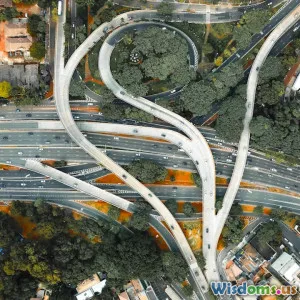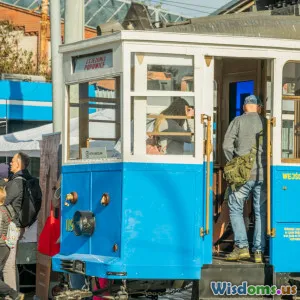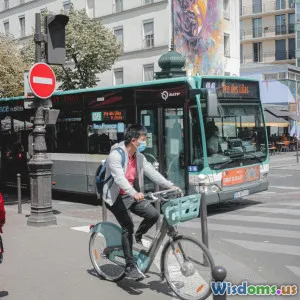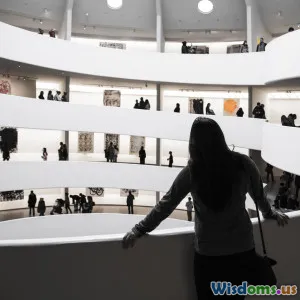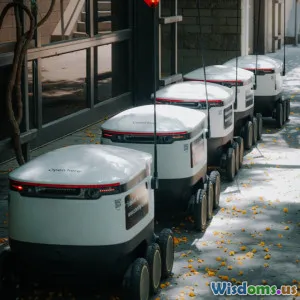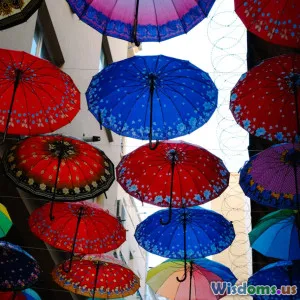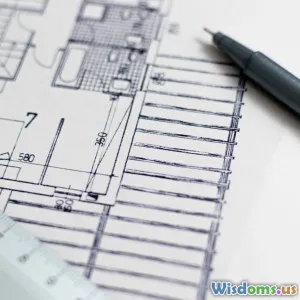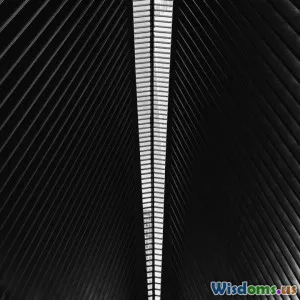
Innovative Public Spaces Around the World
8 min read Explore transformative public spaces worldwide redefining urban life through innovative architecture and design. (0 Reviews)
Innovative Public Spaces Around the World: Redefining Urban Life
Public spaces are the livable, breathing heart of every city. They are sites of social interaction, cultural expression, environmental innovation, and sometimes, stirring architecture. Across the globe, groundbreaking public spaces are forging new paths in urban design, blending functionality, sustainability, and inspired creativity. This article journeys through some of the most innovative public spaces worldwide, illustrating how thoughtful design can transform cities and communities.
Introduction: The Essential Role of Public Spaces in Urban Environments
As urban populations swell—United Nations projections estimate that by 2050, 68% of the world’s population will live in cities—the need for effective, inspiring public spaces grows increasingly pressing. These spaces are more than just “green areas” or pedestrian zones; they are lifelines promoting social cohesion, physical and mental well-being, and ecological sustainability.
Innovative public spaces challenge traditional urban paradigms by integrating advanced architectural concepts, technology, and community engagement. They serve as cultural hubs, recreational grounds, and sometimes ecological classrooms. Their designs reflect not only aesthetic values but also address environmental imperatives, social inclusivity, and accessibility.
Innovative Concepts Shaping Public Spaces Today
1. Adaptive Reuse: Breathing New Life into Old Structures
The concept of adaptive reuse is a leading force in the reinvigoration of public spaces. It involves transforming obsolete buildings or areas into vibrant public realms without erasing their historical or cultural significance.
Example: The High Line, New York City
Once an elevated freight rail line, the High Line was reimagined into a lush, linear park running through Manhattan’s west side. This adaptive reuse not only preserved industrial heritage but created a green, public artery fostering arts, community events, and tourism. Since opening in 2009, the park attracts millions annually and has sparked nearly $2 billion in nearby real estate development, exemplifying how creative public space can revitalize urban fabric.
2. Biophilic Design: Integrating Nature to Promote Health and Sustainability
Biophilic design borrows from natural forms and systems to reconnect people with nature within urban settings, encouraging wellness and biodiversity.
Example: Gardens by the Bay, Singapore
This 101-hectare garden complex features the iconic Supertree Grove—vertical gardens towering 25-50 meters tall—and climate-controlled conservatories. It showcases climate-sensitive architecture, sustainable energy use through solar panels on the Supertrees, and innovative rainwater harvesting systems. The space offers educational opportunities and serves as a global benchmark for eco-friendly public spaces.
3. Smart Technology Integration: Enhancing Urban Experiences
Modern public spaces increasingly incorporate smart technologies to improve accessibility, safety, and engagement.
Example: Songdo Central Park, South Korea
Located in the innovative city of Songdo, this park integrates IoT (Internet of Things) solutions: smart lighting adjusting according to pedestrian flow, environmental sensors monitoring air quality, and app-based services informing visitors about events and facilities. The thoughtful technological infrastructure offers an enhanced visitor experience without sacrificing the natural ambience.
Spotlight on Global Exemplars
The Promenade Plantée (Coulée verte René-Dumont), Paris
Preceding the High Line by two decades, this elevated park began in 1993 atop obsolete railway tracks. It thrilled urban planners by combining linear green space with artistic installations, rare plant species, and community-driven spaces. The adaptive reuse here paved a way for countless cities to reconsider aerial public pathways.
The Bentway, Toronto
This innovative project transformed underutilized space beneath an expressway into a dynamic outdoor public area with winter skating trails, marketplaces, and performance venues. It exemplifies how overlooked urban infrastructure spots can metamorphose into lively social nodes.
Superkilen Park, Copenhagen
Celebrating cultural diversity, Superkilen incorporates artifacts and design elements from over 60 countries represented in the surrounding neighborhood. This vibrant, globally-inspired park challenges conventional aesthetics and invites reflection on multicultural urban identity.
Designing for Inclusivity and Accessibility
True innovation in public spaces goes beyond aesthetics and technology; it touches equity and inclusiveness. Features such as ramps for wheelchair access, sensory gardens for people with disabilities, seating arrangements accommodating elderly visitors, and interactive zones for children ensure everyone benefits.
For instance, Bryant Park in New York redesigned its pathways and seating to cater to diverse populations, leading to a quadrupling of visitors within a few years, underscoring the importance of inclusive design.
Environmental Impacts and Green Infrastructure
With urban heat islands threatening livability, many innovative public spaces double as ecological solutions. They incorporate green roofs, permeable pavements for stormwater management, native plants promoting local ecosystems, and urban forests contributing to carbon sequestration.
Teem Plaza, Helsinki features absorbent surface materials and rain gardens that mitigate flooding. This reflects an awareness of how urban design can contribute significantly to climate adaptation.
Conclusion: Inspiring a Future of Dynamic, Sustainable Public Spaces
Innovative public spaces are more than beautification projects—they are investments in urban resilience, social equity, and quality of life. By blending cultural sensitivity, cutting-edge design, and environmental responsibility, these spaces set new standards for how cities can and should evolve.
Urban planners, architects, and policymakers can draw from global examples, adapting ideas to local contexts to create multifunctional areas that inspire community engagement and ecological stewardship. Ultimately, the best public spaces are those that foster a sense of belonging, encourage healthy lifestyles, and connect people not just to each other but to the planet itself.
As cities across continents strive to meet the mounting challenges of the 21st century, innovative public spaces will be crucial catalysts in shaping more vibrant, equitable, and sustainable urban futures.
“The creation of public spaces is not just a matter of aesthetics but profoundly impacts people’s daily experience and the social fabric of cities.” – Jan Gehl, Architect & Urbanist
Rate the Post
User Reviews
Popular Posts











